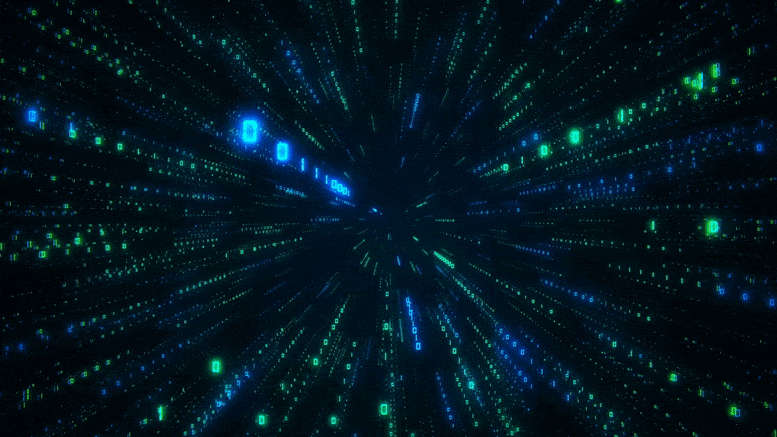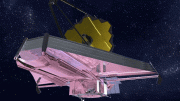
Real-time transmission of haptic sensations over the Internet could enable remote physical operations, leading to the Internet of Skills and democratizing expertise across diverse populations. However, achieving the necessary immersion over long distances is currently unfeasible, requiring new solutions to overcome these challenges.
With a grant from Independent Research Fund Denmark, a team of researchers and experts from industry and Aarhus University will try to solve the fundamental problem that the speed of light simply is not fast enough for the Internet of Skills.
Human skills will be digitalized and democratized in the future through the Internet of Skills: a future internet that will allow you to utilize robot technology and haptic feedback to transmit expertise in real-time, regardless of where you are or where the problem to be solved is.
Consider a highly specialized surgeon performing a tele-surgery on a patient thousands of kilometers away in which, despite the fact that a robot is using the scalpel, the operation seems as real to the surgeon as if she were using the scalpel with her own hands.
Physically impossible
This vision, however, is not feasible today. This is due to the fact that reproducing the sensation of touch utilizing forces, vibrations, or movements on the user, and thus ‘fooling’ the skin and body into thinking that what we are feeling in the virtual world is genuine, demands a network with sub-millisecond latency. Networks with ultra-low latency and ultra-high bandwidth, in which operation command and haptic feedback occur end-to-end with a maximum delay of one-thousandth of a second.
Such extremely low latency limits the maximum communication distance to only 150 km, even under ideal conditions. Light cannot travel any further when information has to move backwards and forwards between the human operator and remote slave robot within the latency bound.
“Enabling real-time transmission of haptic sensation over the Internet will potentially allow diverse physical operations without humans being physically present. This will pave the way towards the envisioned Internet of Skills which will better disperse and democratize skills and expertise among people, regardless of gender, age, and other diversities. This can reduce the amount of travel and associated CO2 emission. However, the required level of immersion is unattainable over long distances at this stage. Hence, novel solutions are needed to address the challenges,” says Associate Professor Qi Zhang from the Department of Electrical and Computer Engineering at Aarhus University.
Digital twin
Qi Zhang is heading a new research and development project called the eTouch, which aims to overcome the physical limitations of today’s telecommunications. The aim is to create an immediate response, regardless of distance, so that haptic feedback can be perceived by the user without noticeable delay, even though the communication is at a distance of thousands of kilometers.
To solve this problem, the team will leverage Model-Mediated Teleoperation, in which a virtual model (a digit twin) will accurately describe the remote environment, and which locally generates the haptic feedback instantaneously instead of transmitting it over long distances.
However, it is quite challenging to create an accurate model and make effective and reliable model updates in real-time with the current data-processing paradigm. Therefore, the team will use Edge Computing paradigm.
Industrial applications
The team will therefore include world-class experts in the fields of edge computing, tele-robot technology, and machine learning from the Technical University of Munich (TUM), the Technical University of Dresden (TUD), Aarhus University, and industrial stakeholders, including the tech company Rope Robotics.
Nevertheless, the team will not be focusing on tele-surgery, but rather on industrial applications with relatively simple operations.
“Realising our vision entails great challenges, so we have to start from the basic operations and take small steps at a time. But if our method works, it could be ground-breaking for the internet of the future and enable the spread of the tactile internet over intercontinental distances and perhaps even in space,” says Qi Zhang.
One of the biggest trends of the future
The Danish company, Rope Robotics, is developing robots that can replace the manual labor that is currently required to maintain and repair wind turbine blades.
The goal is a robot system that can crawl around on the wind turbine blades and clean, grind, polish and paint them without human interference.
“It’s important for us to have close contact with the leading universities in the world and to be an integral part of the latest research within our field,” says Martin Huus Bjerge, CEO of Rope Robotics. He continues: “We consider the Internet of Skills as one of the biggest trends of the future, and we’re looking forward to working together on this project. It’s very exciting, and it may have a major impact on the robot technology we develop.”
The eTouch project, which stands for Edge Intelligence for Immersive Telerobotics in Touch-enabled Tactile Internet, is being supported by the Independent Research Fund Denmark with DKK 2.9 million. The project will start in 2022 and run for three years.









For a while, I thought this article will discuss the possibility of an actual FTL telecommunication theories. But while diving more into it, I returned to my time.
Impossível sem física quântica.
The headline and first paragraph damage the credibility of the reporting on serious research.
Sounds like what they need to be using is quantum entanglement to avoid any latency.
I don’t believe quantum internet will solve the latency issue as whilst the qubits themselves transmit their states “instantaneously” a classical information channel is still required to act as the “key” needed to interpret the data-meaning of the transmitted quantum state.
Ja FTL wird noch was dauern wenn es jemals kommt die ersten warpblasen haben schon erfolgreich den Raum so beeinflusst das man mit weniger als FTL mehr als FTL an Strecke zurück legen würde allerdings nur wenn ich das richtig in Erinnerung habe
O estranhamento quântico é na minha opinião a única saida para driblar a latência em distâncias espaciais por exemplo. Pena que ainda tá longe de funcionar na prática. Caso funcione, rompe até a ficção de THE EXPANSE.
Eu quis dizer emaranhamento.
Why can’t mankind go faster than the speed of light? Outer space is 99.99999% percent free of matter (mass). What does that do to the famous Einstein equation E=MC2 ? It makes it obsolete! E=MC2 without the Mass M is a meaningless equation implying that the speed of light in space has no limit because the infinite mass part of the equation drops out and implies it does not take an infinite energy to create an anti-matter propulsion engine to go faster than the speed of light. Get it !
https://drive.google.com/file/d/1JNB6n_ucOsf_97LOdpWcFooNkMOeDE-e/view